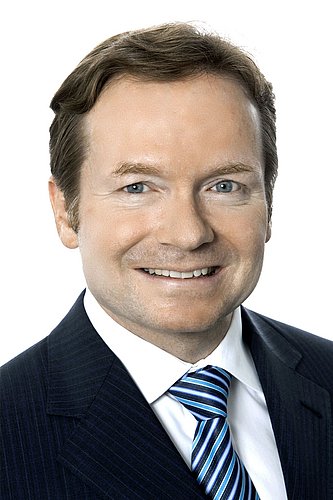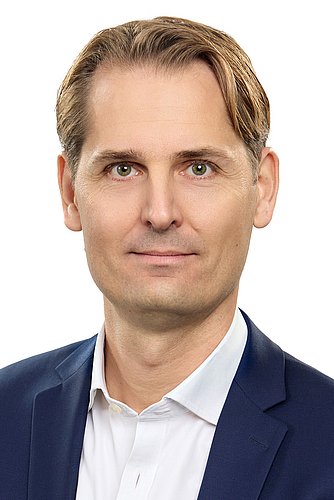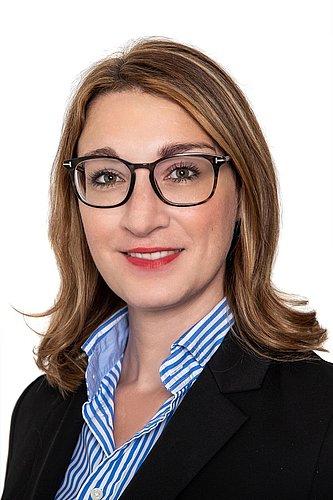SPAC – A trend is gaining momentum
Update Capital Markets / Private Equity No. 44
The time is ripe: On February 22, 2021, Lakestar SPAC I SE, formed by well-known investor Klaus Hommels and headquartered in Luxemburg, became the first shell company to be launched as a SPAC on the Frankfurt Stock Exchange in more than ten years. This places a focal point on a phenomenon in Germany that has experienced a veritable resurrection in the U.S. market in recent years and particularly in 2020, where it has become a popular instrument for transaction structuring – including and especially for private equity investors. Lakestar SPAC, incorporated under the laws of Luxemburg, is now on the market in Germany and it is generally expected that this will not remain an isolated case here. Obviously, this raises many questions: What exactly is a SPAC? Are SPACs interesting for PE investors in Germany? And how does it all work? This article gives the answers.
What is a SPAC?
SPAC stands for Special Purpose Acquisition Company. A SPAC is (initially) a pure shell company formed by major investors or investment managers, referred to as sponsors. The SPAC’s sole purpose is to raise capital by issuing shares, whether by way of an IPO or a private placement, and to use this capital to acquire a target company within a specified period. At the time of the IPO, it has not yet been determined which company is to be acquired. Generally, however, there are binding specifications in terms of size, industry, or other parameters in relation to the target company. The Frankfurt Stock Exchange expects the existence of such specifications as the basis for its listing decision.
The money raised is initially placed in a trust account until a suitable target company is identified. The transaction must take place within a certain period of time, typically between 18 and 36 months (regularly 24 months). If the SPAC is unable to find a suitable target company during this period, it will be liquidated and the funds raised are returned to the investors.
In the U.S., such structures have been known for quite some time as “blank check companies”, which are also companies with the sole objective of raising capital that is not earmarked for a specific purpose. The use of these structures has always been subject to up and down periods in the U.S. in the past, with a sharp increase in recent years. Germany only recorded isolated cases prior to Lakestar SPAC (e.g., Helikos SE and European CleanTech I SE, both listed on the Frankfurt Stock Exchange in 2010).
Differences to the pure shell company acquisition (reverse IPO/RTO)
The SPAC model, even though there are various forms, is different from the pure acquisition of “empty” shell companies that are already listed on the stock exchange (reverse IPO/RTO). The shares of the (empty) shell company are acquired by an investor to then inject an operating business into the shell – for example against the issue of new shares.
Private equity as SPAC sponsor
A look at U.S. practice shows that the sponsorship role of SPACs has recently become a useful addition to the structuring options for a large number of traditional private equity funds. Notable examples include Apollo Global Management, RedBird Capital, and Solamere Capital, each of which launched significant SPACs in 2020. SPACs offer sponsors (and investors) a number of advantages over traditional investment structures, which are also interesting and usable for private equity funds. This is not only true for the global players in the PE sector, but especially for smaller and mid-sized funds with a focus on the German market.
- SPAC structures offer private equity funds direct access to the capital markets, thus being a useful complement or alternative to traditional fundraising processes.
- The potentially broader base of available equity allows for investments in larger target companies and may help particularly smaller and mid-sized funds to enter new markets and to pursue new investment targets. Restrictions relating to certain industries or target companies that may be contained in the fund’s articles of association may not apply to the SPAC. In this way, SPACs may also contribute to an expansion of potential investment targets.
- As sponsor, the private equity fund participates disproportionately in a successful transaction and positive development of the target company via the shares (founder shares) and warrants (founder warrants) acquired at favorable terms in a separate private placement prior to the IPO, securing an equity position of at least 20 percent in the target company.
- These benefits can be shared (disproportionately) with fund management, target company management, and other stakeholders, which may significantly increase the ability to get the deal done.
- SPACs can be used as a vehicle for co-investments, reducing the amount of debt in the overall investment.
- In practice, the risk for the private equity fund as sponsor is manageable in the early phase of the investment (pre-acquisition) due to the deposits held in trust being repayable in the event of failure.
- At the end of an investment’s lifecycle, SPACs can significantly simplify the exit for sponsors / private equity funds, as the liquidity of the shares is already secured in view of the existing stock exchange listing.
SPAC as a new exit option for private equity
A key perspective on SPACs also relates to portfolio companies and their private equity shareholders. Another look at U.S. practice shows that it can be an attractive option to go public via SPACs, especially for companies in the portfolios of well-known private equity funds. This is evidenced by the acquisition of Advantage Solutions, a company formerly held by CVC Capital Partners, Bain Capital, and Leonard Green & Partners, by a SPAC launched by Centerview Partners. This exit option is also of considerable interest, particularly for small and medium-sized private equity funds with a focus on the German market.
- The increased presence of SPAC structures in the German market will create a large number of potential acquirers and thus significantly strengthen the demand side.
- Private equity-backed companies are in general considered professionally managed and structurally optimized, making them particularly attractive to SPACs and their investors. Particularly in view of existing corporate governance structures and general stock market maturity, private equity is seen as a quality feature that can be marketed in the sales process with SPACs.
- Liquidity is ensured in view of the existing listing if shares in SPACs are given as consideration as part of the transaction.
- SPAC transactions are a cost-effective alternative to traditional IPOs from the perspective of the target company and its shareholders, also in view of the founder shares and founder warrants granted.
Overview SPAC IPO
In principle, the SPAC shell may be admitted to all German stock exchanges. Even a listing on the open market is not excluded per se. As for a classic IPO, a securities prospectus is also required for a SPAC to be admitted to the regulated market, irrespective of whether the shares are issued by way of an IPO or a pure private placement.
Admission practice of Deutsche Börse
In case of admission to the regulated market, stock exchanges are bound by statutory admission requirements – in contrast to a listing only in the OTC market organized under private law. The main statutory requirement for admission to the regulated market is that the issuer of the shares to be admitted must have existed as a company for a minimum of three years and must have disclosed its annual financial statements for the three fiscal years preceding the application in accordance with the applicable regulations. In practice, however, Deutsche Börse, exercising the discretion granted to it by the legislator, also admits shares of SPACs to trading on the regulated market of the Frankfurt Stock Exchange (Prime Standard/General Standard) that have not yet existed as a company for three years if the following requirements are met:
- The issue proceeds are to be paid into an interest-bearing trust account.
- The intended use of the issue proceeds is described in detail in the securities prospectus.
- The SPAC demonstrates that the company is limited in time and, in the event of its dissolution, the trust funds are distributed to the investors and that it is ensured that the shareholders will decide on the use of the trust funds with at least 50 percent majority.
These special requirements must therefore be observed in addition to the general requirements for a listing on the regulated market (e.g., certain market capitalization, minimum number of shares to be issued, minimum free float) when drafting the securities prospectus. Details should always be coordinated with the stock exchange in advance of the application.
Structure of SPAC shares – combination of shares and warrants
When launching a SPAC, initially linked compound securities (“units”) are issued, which consist of one public share and one public warrant, or part thereof, entitling the holder to subscribe to additional SPAC shares. In a German stock corporation (AG) or SE, the issuance of such naked warrants is not legally possible, however, so that also against this backdrop SPACs are regularly launched as SEs under Luxemburg law. This does not prevent a listing of the company incorporated under foreign law on the Frankfurt Stock Exchange.
After the IPO, the public shares and public warrants will be held in collective custody as separate securities at Clearstream and can be traded separately on the stock exchange. In addition, the sponsors will also receive shares in the SPAC. These founder shares and founder warrants (“sponsor’s promote”) will not be admitted to trading on the stock exchange, however, and may be converted into regular public shares of the SPAC after completion of the successful merger. The instruments issued regularly ensure that the sponsors hold an interest of at least 20 percent in the target company after conclusion of the transaction and the conversion of the founders shares into public shares.
Opt-out and liquidation
Finally, the securities prospectus regularly provides for the possibility for investors to demand the redemption of their shares if the general meeting has consented to performing the transaction (“opt-out”), i.e., the shareholders may have their contribution paid out in economic terms. In addition, performance of the transaction frequently depends on the proportion of shareholders exercising the right to opt out not exceeding a certain threshold (regularly 20 percent to 30 percent). If a transaction does not occur within the specified period, the SPAC is liquidated so that investors also are returned their contribution in this event.


![[Translate to English:]](/fileadmin/_processed_/4/4/csm_von_Rosenberg__Dr._Oliver_print_366a23bfd9.jpg)









![[Translate to English:] [Translate to English:]](/fileadmin/_processed_/6/a/csm_Weltkugel_Symbole_Waehrung_iStock_erweitert_c03f75b8f5.jpg)


